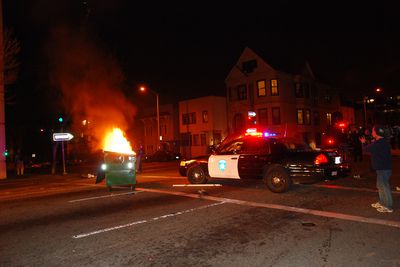A lot of us who covered the violence surrounding the Republican National Convention wondered aloud occasionally whether things would be the same if we put away our cameras, tape recorders, and notepads and simply took a hike?
Maybe we have the answer in the violence that broke out Wednesday following protests of the killing of an unarmed man by a Bay Area Rapid Transit policeman. The killing was captured on video by a cellphone camera (you can view it here if you’re so inclined).
Near the end of a segment on the subsequent violence, a guest on NPR’s Talk of the Nation provided some keen insight into the related question of what role the media plays in crowd behavior.
Demian Bulwa, a staff writer for the San Francisco Chronicle, was at the riot.
“There was also a dynamic with the media at the protest last night where there were so many of us. It was sort of unmistakable; we were part of the thing. You might have one guy confronting a police officer with three camermen, and two reporters, a still photographer, and a blogger, and someone who’s live on the air with some sort of Internet radio. And, you know, it concerned me that I thought to myself, ‘What if we left? What would happen? What if the police left? What would happen? But, you know, later in the night when all of the TV cameras were gone, I was still with the protesters and they were still smashing stuff.”
The other question that ran through my mind is if there hadn’t been someone videotaping the shooting in the back of an unarmed man, how might the story of what happened be different, if at all?
(Photo courtesy of Javier Panzar)

